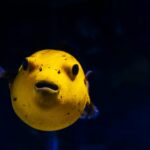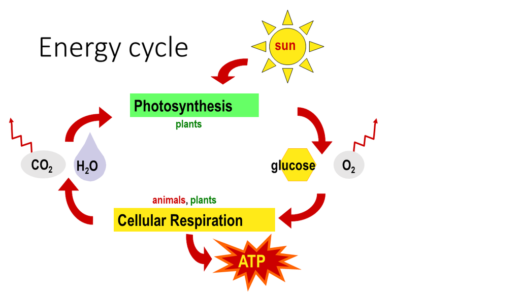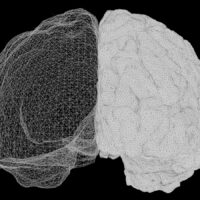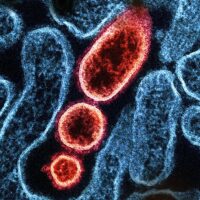Color Vision and Color Communication in Reef Fish
Anyone who has snorkelled or dived on a coral reef always surfaces exclaiming about the beauty of the fish. These jewelled inhabitants of this shallow tropical habitat have been a source of wonder and interest since the first reef was encountered.
It is important to realize that in fact there is no such thing as color out in the environment. Objects reflect the spectrum of light that reaches them differently, depending on the physical or pigmentary properties of their surface. Photoreceptors, usually cones for color vision, absorb this light according to the spectral absorption of the visual pigment molecule within them and convert this to an electrical message that is sent to the brain. These steps and the way in which the brain combines and interprets these messages is what gives us the sensation of colors and, as made clear later in this article, this varies substantially between animals.
Few of the color codes on the reef have been explained well, but the basic principles of evolution, natural selection, and sexual selection help us to understand some of the functions of reef color. New technology and spectrophotometric (light measuring) methods have also advanced our knowledge of the ways in which fish see and how they use color in the context of their marine environment for survival.
Coral reefs are the densest packed ecosystem on the planet for animal life per cubic meter and this gives one clue to the explanation behind the color diversity of the fish and other animals living there. As recognized by last century’s keen observers of the reef such as Longley, Thayer, Cott, and later on Lorenz, reef inhabitants are in constant communication or anti-communication with each other. Konrad Lorenz, who taught us many of the principles of how to observe animal behavior, said of reefs that “There is in all the world, no other biotope which has produced…. in so closely allied groups of animals, an equal number of extremely specialised forms.” He was mostly talking about the fish and their variety of form and color, and this led him to the idea of poster coloration in reef fish, bright colors that enabled fish to sort themselves out into species types and a hierarchical social structure.
That is, conspicuous colors and patterns encode species identity enabling close cohabitants to rapidly decide what to do when encountering each other as far as aggression, defense, and the desire to mate are concerned. However, this idea has yet to be explicitly tested. Anti-communication, an attempt to conceal or camouflage, is intricately woven into the physical nature of light on coral reefs and the eyes that attempt to recognize camouflaged individuals for various reasons. The same close relationship exists between light and color used in deliberate communication and this article gives examples of both communication and camouflage.
The fish we see when we go to a reef represent a small proportion of the biomass of fish that live there. Most fish on the reef are less than 3 cm long and many of them are cryptic (hiding) or shy. However, because we are relatively large animals, we tend to see relatively large fish, perhaps a velvet blue-yellow angelfish defending his territory of sponges and pink-purple parrot fish male with his drab harem of females in tow. Another subjective problem is partial color blindness because some reef fish have a very different color vision than we do. Humans are primates and our color vision evolved for the tasks of survival in forests and other terrestrial environments looking to find ripe fruit or young red leaves.
Camouflage and Communication on the Reef
Yellow and Blue, Reef and Water
The underwater visual scene at around 10 m is quite different to land. Directly up to an angle of 43° (Brewster’s angle beyond which total internal reflection starts), there is the bright shimmering surface, through which the sky may be more or less visible depending on the waves. Below this is a relatively uniform and dimmer blue, diffuse background body of water into which vision cannot penetrate more than a few tens of meters. The coral and other reef structures appear at various heights, depending on the ruggedness of the reef and the observer’s own size. In shallow water habitats over light reflective sand, looking down may also be very bright, a terrestrial condition experienced only when light reflects off the surface of snow.
The aquatic world is also more three dimensional. Observers and signalers are more dispersed and this is important when considering what angle to view others at and when trying to be camouflaged from all angles. Many reef animals also tend to ‘hug the ground’ or hide in the reef structure for protection and camouflage. Thus, the horizontally divided, distance-truncated three-dimensional habitat of the reef has resulted in a number of specific visual and signaling adaptations. Reef fish lack the high visual acuity of many land animals (most reef fish have resolving power around 10 times worse than humans) and some have evolved relatively simple color vision with only two cone types or color channels.
These dichromatic fish are much like many mammals on land and are in some ways similar to a red–green color blind human. These two-channel color vision systems can extract enough information from the world for survival on just one color axis. In behavioral tests for humans, this is called the blue-yellow axis, and for all dichromatic species it is constructed from a photoreceptor sensitive to the short wavelength or blue part of the spectrum and one sensitive to longer wavelength around yellow. Color detection or discrimination that requires information from the red–green axis has resulted in the addition of a third color channel or cone mechanism in some primates, allowing, for example, better determination of ripening fruit and other tasks.
Some reef fish become trichromatic, and others possess four color channels. At depth, the whole color world is more restricted to wavelengths shorter than yellow. However, a fish living very close to the reef top will experience close to full spectrum daylight, like that on land. As a result, if their lifestyle demands it, coral reef fishes clearly take advantage of the colors available and increase their color sampling range. The color code adopted for effective camouflage and communication in this habitat is biased toward yellow and blue. Several small reef fish species, notably in the damselfish (Pomacentridae), are colored mostly blue, blue-green, or yellow all over. Other larger fish, such as the angelfish (Pomacanthidae) or surgeonfish (Acanthuridae), use stripes or large blocks of yellow and blue colors.
These complementary colors are clearly being used to communicate. Complementary colors are ones that contrast strongly with each other, the result of them reflecting in opposing parts of the spectrum. Smaller reef fish that are blue all over can get the same effect by positioning themselves against the yellow-brown of coral and yellow fish can do the same against the blue water background. Lythgoe, Loew, McFarland, and other investigators have also pointed out that yellow and blue colors transmit information a long distance in marine waters, mainly because their regions of largest spectral change fall within the marine environment lighting envelope.
Communication and Deception
Cleaner Blue (and Yellow)
Reef fish can be divided into guilds, or color clubs that, according to either behavior or habitat, could explain some of the color diversity. Cleaner fish, often wrasse or gobies, are relatively small and offer a skin, teeth, and gill cleaning services to clients. Fish cannot easily preen themselves of the many invertebrate parasites, such as worms and crustaceans. Cleaner fish exploit the protein banquet by picking off these itchy hitch-hikers and cleaning dead skin and scales from wounds from generally larger reef, or clients. This mutualistic relationship is a delicate one, as the small fish must enter the mouths of predators to pick off parasites and damaged skin. If the predators swallowed the cleaner, or if the cleaner ripped off more than just the required bit, the relationship would never have evolved.
Cleaners may set up a cleaner station on the reef and clients learn where to come to be cleaned. Part of this service involves advertising by the cleaners and there are stereotyped movements and dances cleaner fish perform over their station to show off what they offer. Many cleaner fish from diverse families are yellow and blue, normally in longitudinal stripes and often with black to increase contrast. Not surprisingly from what we know of yellow and blue on the reef, through a combination of behavioral tests and visual system models, the cleaner fish colors, including blue, were indeed shown to be an effective advertisement color combination, and likely instrumental in setting up the mutualism required. Thus, the cleaner blue guild has given way to a cleaner yellow-blue guild, in many cases emphasized with black.
Conclusion
Both the number and spectral sensitivity of cone mechanisms are very diverse on the reef and so far we have no clear understanding of what drives this variability. Ideas of basic visual ecology can only explain some of the general trends such as the UV, blue, green bias of reef fish visual systems that broadly matches water transmission characteristics. Phylogenetic trends are very general and are also populated with general loose observations such as ‘damselfish often have UV vision’. The idea of co-evolution of colors and color vision has been proposed for a number of animals. Some correlation does exist between the spectral positioning of reef fish colors and cone sensitivity placement as noted by Marshall, McFarland, Losey, Loew, and others; however, this has many exceptions.
We are still left with the mystery of why reef fish possess such apparently diverse color vision types. Aside from those fish in the deeper regions, or those species that are crepuscular or nocturnally active, the general light environment is the same for all species. As a result, to find the answer, we must further study the individual species on the reef and learn more about their specific ways of living.
ADVERTISEMENTS
ADVERTISEMENTS


















